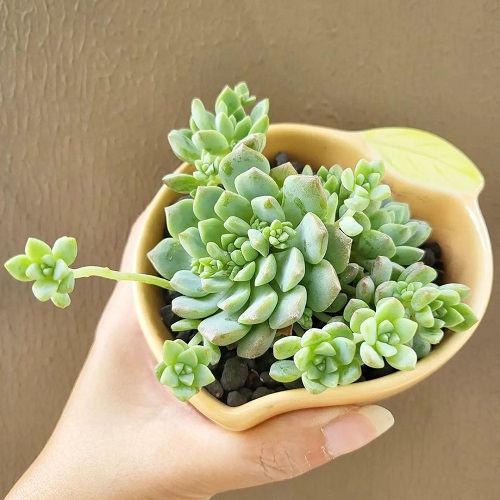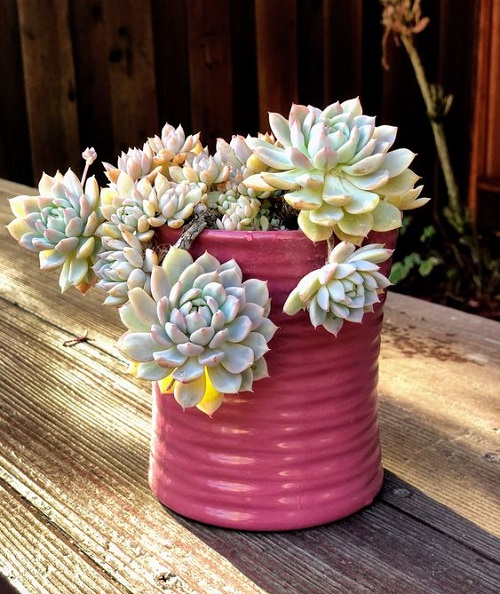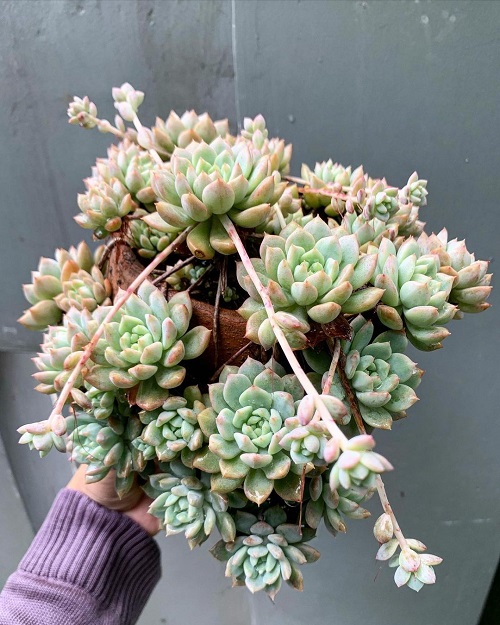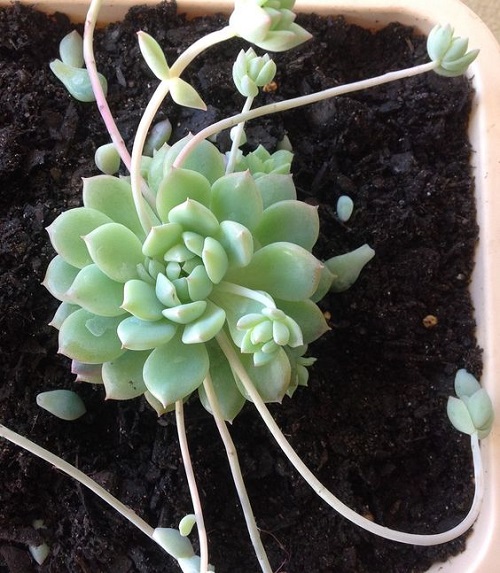Echeveria prolifica is one of the most beautiful succulents you can grow. It can also be a great tabletop plant!
Echeveria prolifica is a popular succulent admired for its attractive appearance and ease of care. Its rosette-like leaves grow in clusters and produce a profusion of offsets, making it stand out like a champ! Let’s have a look at how to grow it.
USDA Zones: 8-11
Family: Crassulaceae
Common Names: Mexican hens and chicks, Echeveria, Prolific hens and chicks
Here are the best types of Echeverias you can grow
Echeveria prolifica Plant Profile
Echeveria prolifica is a small, compact plant that typically grows to about 4-6 inches in height and 6-8 inches in width. It forms tight clusters of rosette-shaped leaves that are approximately 1-2 inches in diameter.
The leaves are thick and fleshy, with a pale blue-green coloration that is tinged with pink or purple at the tips. The edges of the leaves are slightly serrated, giving them a delicate, frilly appearance.
Echeveria prolifica produces offsets, or small plantlets, at the base of the mother plant, which can be easily removed and planted to produce new plants. The plant produces small, bell-shaped flowers that bloom on tall stalks in the summer.
Check out these Echeveria Varieties that Grow Bigger and Fuller
Echeveria prolifica Propagation

Propagation of Echeveria prolifica through Leaf cuttings and Offsets is really easy.
By Leaf Cuttings:
- Choose a healthy Echeveria prolifica and remove it cleanly from the stem using clean scissors.
- Allow the leaf to callus over for a few days to prevent it from rotting.
- Place the leaf on top of well-draining soil and water sparingly.
- After a few weeks, the leaf will start to produce small roots and a new plantlet will emerge from the base of the leaf.
- Once the new plantlet has grown to a reasonable size, it can be planted in its own pot or added to a garden or container and cared for as a mature plant.
Learn How to Grow and Care for Echeveria elegans here
Through Offsets:
- Remove an offset from the base of the mother plant with care.
- Allow the offset to callus over for a few days to prevent it from rotting.
- Plant the offset in well-draining soil and water sparingly.
- After a few weeks, the offset will start to produce roots and grow into a new plant.
- Transfer this plant to a pot or ground and care for it like a mature plant.
Have a look at the best flowering succulents here
Requirements for Growing Echeveria prolifica
Light
Echeveria prolifica requires bright, direct sunlight for at least 5-6 hours a day to thrive. This plant can also tolerate partial shade, especially during the hottest part of the day.
In indoor spaces, choose an east-facing window where it can bask in some morning sun and remains safe from the scorching afternoon heat for the rest of the day.
Soil
It prefers well-draining, sandy soil that is rich in organic matter. A soil mix consisting of equal parts of potting soil, sand, and perlite works well for Echeveria prolifica.
It is important to avoid using heavy or clay soils, as these can lead to waterlogging and root rot.
Learn How to Treat Root Rot in Houseplants Like a Pro here
Water
Echeveria prolifica hate overwatering, as it can cause root rot. The best is to water the plant only when the topsoil goes completely dry.
Do not water the plant on a daily basis, and also avoid spilling water on its leaves.
Here are the best ways to water plants
Temperature and Humidty
This succulent thrives in warm temperatures ranging from 18-35°C (65-95°F). Echeveria prolifica can tolerate slightly cooler temperatures during the winter months but should be protected from frost and extreme cold.
Sudden temperature changes can cause stress to the plant, so it is important to avoid placing it near drafty windows or doors.
High humidity levels can lead to fungal diseases and rot, so it is important to provide good air circulation around the plant.
Here are Ways To Increase Humidity For Houseplants That Work
Echeveria prolifica Care

Fertilizer
Echeveria prolifica does not require frequent fertilization, but it can benefit from occasional feeding during the growing season. Use a balanced liquid fertlizer once in 5-7 weeks after diluting it to 1/2 of its strength.
Do not fertilize during the winter months when the plant is dormant.
Want to Make Organic Fertilizers from Kitchen Scraps? Click here
Pests and Diseases
The plant is relatively pest-resistant, but Echeveria prolifica can occasionally be affected by mealybugs, spider mites, and scale insects. Wipe down the leaves with a cotton swab dipped in rubbing alcohol or by using insecticidal soap to get rid of them.
Echeveria prolifica can be susceptible to fungal diseases such as root rot and leaf spot. Avoid overwatering the plant and high humidity levels to keep it safe from these issues. You can also use a fungicide as a preventative measure.




